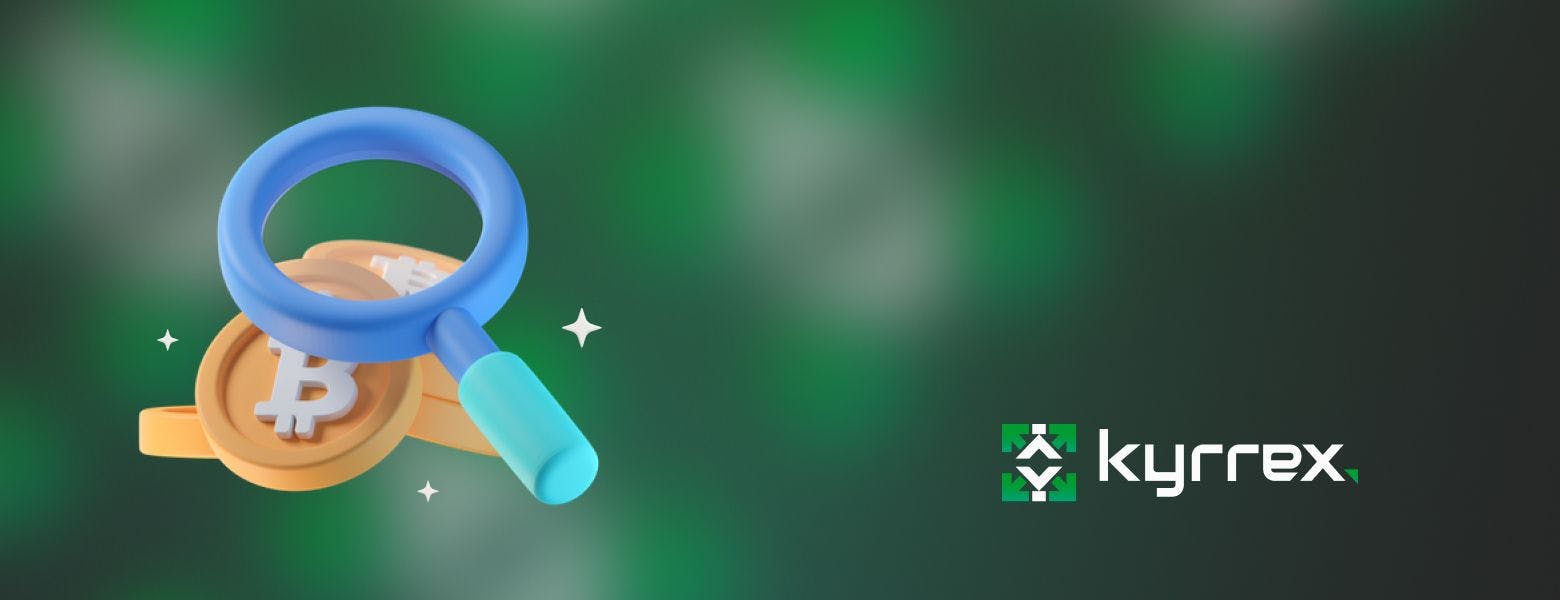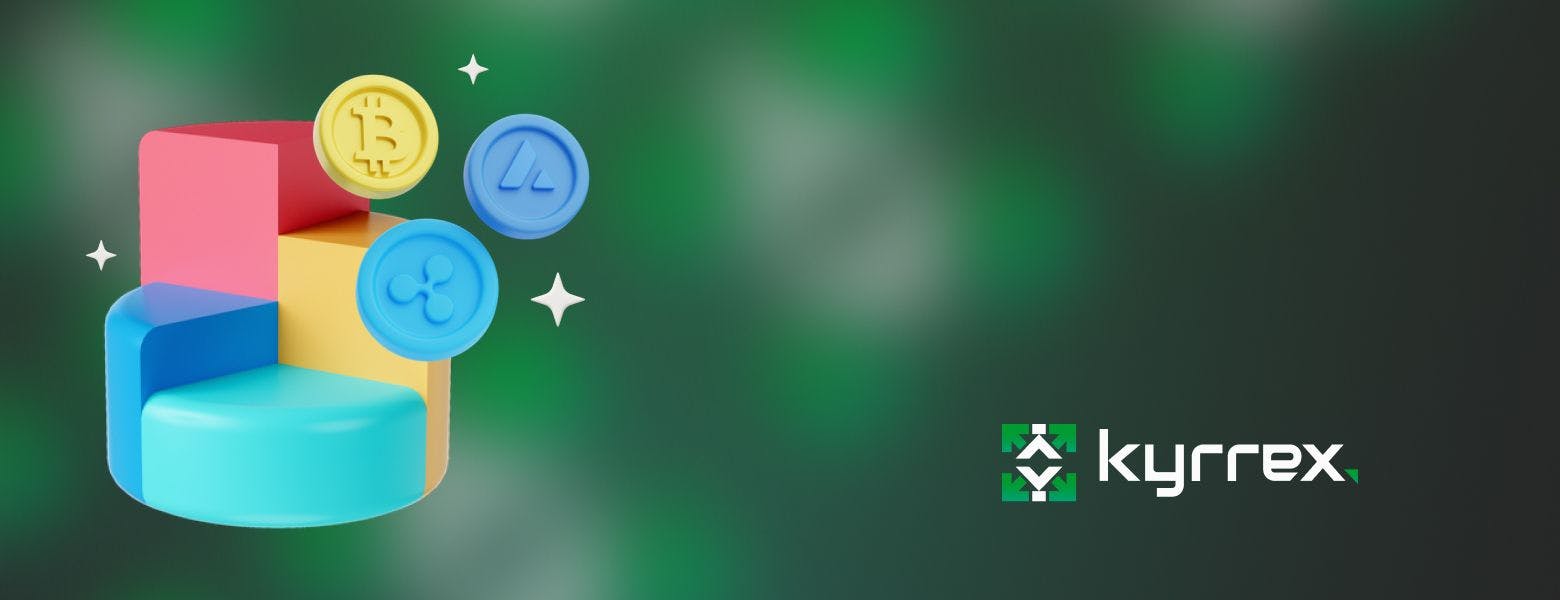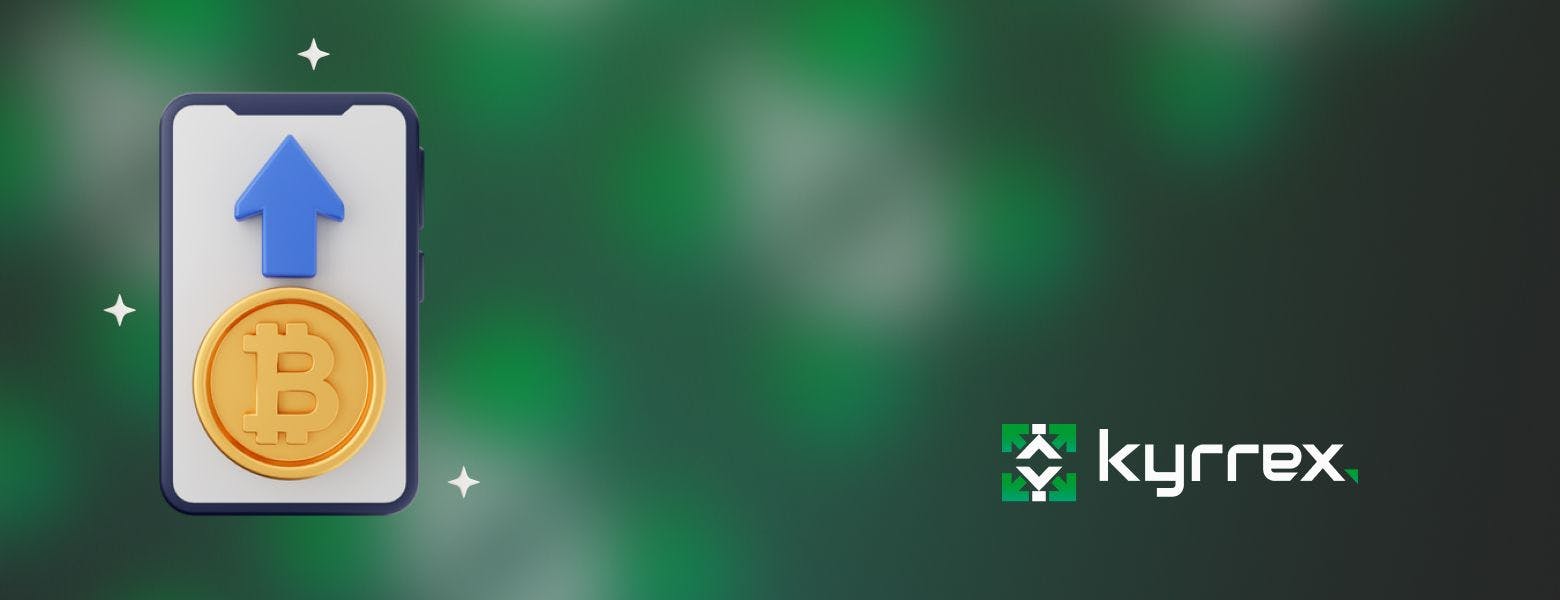
Exploring Crypto: Definition, Types and Examples 2023

Cryptocurrencies have taken the world by storm, revolutionizing the way we perceive money and conduct transactions. But what exactly are these digital assets, and how can we harness their power for financial gain? In this comprehensive guide, we’ll explore the ins and outs of cryptocurrencies, from understanding their underlying technology to buying, selling, and safeguarding your digital assets, with a focus on crypto.
We’ll delve into the world of Bitcoin and altcoins, introduce you to the concept of blockchain technology and its applications, and provide insights into the best practices for trading, earning rewards, and securing your digital wealth in the crypto sphere. So let’s embark on this fascinating journey and unlock the true potential of cryptocurrencies!
Short Summary
- Cryptocurrencies are becoming increasingly popular due to their secure and decentralized transactions.
- Exchanges enable customers to trade digital currencies for other assets, while earning rewards with crypto can provide an opportunity to generate passive income.
- Adhering to best practices such as using strong passwords, enabling two-factor authentication (2FA), and safeguarding private keys can help protect one’s digital assets in the cryptocurrency world.
Understanding Cryptocurrencies
Cryptocurrencies are digital assets that use cryptography to ensure secure transactions and protect transaction data. They come in various forms, including the pioneer Bitcoin and an array of alternative cryptocurrencies, or altcoins, such as solar power, wind power, and geothermal energy. These digital currencies offer a plethora of advantages, including secure transactions, decentralization, and the ability to earn rewards through staking or participating in network activities.
However, the world of cryptocurrencies is not without challenges. For instance, some aspects of cryptocurrency usage, such as geothermal energy extraction, can raise environmental concerns and require stringent oversight, especially in developing countries where the energy is produced.
Despite these obstacles, the growing popularity and adoption of cryptocurrencies continue to reshape the financial landscape and pave the way for a more decentralized and secure future.
Bitcoin: The Pioneer
Created by the enigmatic Satoshi Nakamoto in 2009, Bitcoin is the first and most well-known cryptocurrency. It serves as a digital alternative to traditional currencies, harnessing the power of blockchain technology to enable secure and decentralized transactions. As a new cryptocurrency at the time, Bitcoin has not only revolutionized the perception of money, but also spawned a novel asset class for investors, attracting the attention of businesses and organizations around the world.
As the trailblazer in the realm of cryptocurrencies, Bitcoin paved the way for a plethora of altcoins that followed in its footsteps, each with its unique features and use cases. Yet, despite the ever-growing number of digital currencies, Bitcoin remains the most popular and valuable, standing as a testament to the transformative power of blockchain technology and the potential it holds for the future of finance.
Altcoins: Beyond Bitcoin
After the advent of Bitcoin, a diverse array of alternative cryptocurrencies, or altcoins, emerged, offering new features, use cases, and technologies. Some altcoins, for example, focus on providing enhanced privacy features, guaranteeing that only you have access to your transaction data. Others are designed for micropayments or small amounts of transactions, catering to specific market needs.
Altcoins such as:
They have carved their niches in the crypto ecosystem, each with its own distinct consensus mechanisms and applications. They can be utilized for various purposes, including payments, remittances, and decentralized finance (DeFi). As the crypto landscape continues to evolve, these altcoins, alongside Bitcoin, are likely to play a significant role in shaping the future of digital finance.
Buying and Selling Crypto
To buy and sell cryptocurrencies, you need to navigate the world of exchanges - platforms that facilitate trading and conversion between fiat currencies and cryptocurrencies. Exchanges are regulated entities, such as Crypto.com, which is licensed as a Class 3 Virtual Financial Assets Service Provider by the Malta Financial Services Authority. These trading platforms not only allow you to purchase digital assets like Bitcoin, Ethereum, and stablecoins, but also offer various services, including order execution and custodian or nominee services.
Navigating the world of crypto exchanges can be daunting for newcomers, but understanding their features and functions is key to unlocking your digital assets’ potential. In the following sections, we’ll explore the different types of exchanges, their offerings, and how to convert your fiat currency into cryptocurrency.
Exchanges: Trading Platforms
Cryptocurrency exchanges are platforms that enable customers to trade digital currencies for other assets, operating similarly to stock exchanges. There are three primary types of exchanges:
- Centralized exchanges (CEXs): These exchanges are operated by a single entity and offer an enhanced user experience, example Kyrrex.com
- Decentralized exchanges (DEXs): These exchanges provide greater privacy due to their decentralized nature.
- Hybrid exchanges: These exchanges combine the features of both CEXs and DEXs.
Exchanges offer a variety of features, such as:
- Trading pairs: allows users to exchange one cryptocurrency for another
- Fiat support: enables users to buy and sell cryptocurrencies using traditional currencies like USD, EUR, or GBP
- Advanced trading tools: including margin trading and stop-loss orders, catering to the needs of both novice and experienced traders.
However, it’s essential to weigh the pros and cons of each exchange, as they can be susceptible to hacking and may impose high fees for trading.
Fiat-to-Crypto Conversion
Fiat-to-crypto conversion is the process of exchanging traditional currency (fiat) for cryptocurrency, typically carried out through a fiat-to-crypto exchange platform. These platforms enable users to convert fiat currencies like USD, EUR, and GBP into cryptocurrencies such as Bitcoin, Ethereum, and Litecoin.
The process is relatively straightforward.
- Create an account on a fiat-to-crypto exchange platform.
- Deposit your fiat currency into your account.
- Use your deposited fiat currency to purchase your desired cryptocurrency.
Although fees for conversion typically range from 0.50% to 2%, it’s essential to thoroughly investigate the exchange platform you intend to use to ensure its security and trustworthiness. Moreover, it’s vital to use a secure wallet to store your cryptocurrency once you’ve acquired it. By following these guidelines, you can safely convert your fiat currency into digital assets and start exploring the world of cryptocurrencies.
Earning Rewards with Crypto
Earning rewards with crypto can be an attractive prospect for many, as it provides the opportunity to generate passive income and explore new financial avenues. By staking or lending cryptocurrencies, users can earn rewards in the form of additional cryptocurrency or interest. With the potential to receive up to 10% in annual rewards when investing in crypto, it’s no wonder that more and more people are drawn to this burgeoning market.
In the following sections, we’ll delve deeper into the world of staking and lending, discussing the processes, benefits, and risks involved in earning rewards with crypto. Whether you’re a seasoned investor or a curious newcomer, understanding these concepts can open up new doors to financial growth and prosperity.
Staking: Passive Income
Staking is the process of locking up a certain amount of cryptocurrency to support the network, with the potential to receive rewards in return. It has emerged as a popular method of generating passive income in the crypto sphere, allowing users to earn interest or rewards by holding a specific cryptocurrency in a wallet to support the network’s operations.
Staking comes with its fair share of benefits, such as the opportunity to generate passive income and contribute to the network’s security. However, it also carries some risks, such as the possibility of not receiving rewards or the fluctuation of the cryptocurrency’s value. By carefully assessing the various staking options available and understanding the risks associated with each, you can make informed decisions and potentially grow your digital wealth.
Lending and Borrowing
Lending and borrowing in the crypto space offer unique opportunities for users to earn interest on their assets or borrow funds using their crypto holdings as collateral. Enabled by decentralized finance (DeFi) protocols, these financial services allow users to lend their crypto assets to others in return for interest or borrow funds by using their crypto holdings as collateral.
The primary benefits of lending and borrowing in the crypto space include the ability to accrue interest on crypto assets, access liquidity, and potentially amplify returns. However, these financial opportunities also come with risks, such as default risk, market volatility risk, and platform failure risk.
By carefully weighing the potential rewards against the risks, you can make informed decisions and explore new financial opportunities in the world of crypto.
Blockchain Technology: The Backbone of Crypto
Blockchain technology lies at the heart of cryptocurrencies, serving as the foundation upon which they are built. This innovative technology provides:
- Decentralization
- Security
- The ability to create smart contracts and decentralized applications (DApps), which have a wide range of applications and use cases.
Understanding the principles of blockchain technology and its various facets can give you a deeper appreciation of the potential that cryptocurrencies hold.
In the next sections, we’ll explore the key features of blockchain technology, such as decentralization and security, as well as delve into the world of smart contracts and DApps. By gaining a solid understanding of these concepts, you’ll be better equipped to navigate the ever-evolving landscape of cryptocurrencies and tap into their full potential.
Decentralization and Security
Decentralization and security are integral features of blockchain technology, working hand in hand to ensure that transactions are transparent, tamper-proof, and not controlled by a single entity. Decentralization refers to the dispersal of authority, power, and decision-making away from a central governing body, which is a core principle of blockchain technology and cryptocurrencies.
This decentralized nature not only allows for greater transparency and control over transactions, but also contributes to enhanced security. Blockchain networks rely on cryptography to secure transaction data and protect it from unauthorized access, making them inherently more secure than traditional financial systems.
By understanding the relationship between decentralization and security, you can better appreciate the unique advantages that blockchain technology brings to the table.
Smart Contracts and DApps
Smart contracts and DApps are programmable applications built on blockchain platforms like Ethereum, which enable a wide array of use cases, such as decentralized finance, gaming, and supply chain management. Smart contracts are self-executing contracts with the terms of the agreement between buyer and seller encoded in lines of code, allowing for the automation of various processes and the elimination of intermediaries.
DApps, on the other hand, are decentralized applications built on top of blockchain platforms that provide users with a range of services and functionalities without the need for a centralized authority. Some examples of DApps include:
- Facilitating peer-to-peer lending
- Creating decentralized video games
- Enabling decentralized social media platforms
- Providing decentralized file storage solutions
The possibilities for DApps are virtually limitless, even for a company looking to explore this technology.
As the world of blockchain technology continues to expand and evolve, smart contracts and DApps are poised to play an increasingly important role in shaping the future of digital finance.
Crypto Adoption and Use Cases
As cryptocurrencies continue to gain traction, their adoption and use cases are growing exponentially. Some of the key use cases of cryptocurrencies include:
- Facilitating payments and remittances
- Enabling decentralized finance applications
- Providing a store of value and hedge against inflation
- Supporting cross-border transactions
- Empowering individuals in countries with unstable economies or limited access to traditional banking services
The versatility and potential of cryptocurrencies are becoming increasingly apparent. With the Global Crypto Adoption Index providing insights into the countries leading the charge in embracing digital currencies, it’s clear that the future of finance is being shaped by these innovative digital assets.
In the following sections, we’ll delve into the various use cases of cryptocurrencies, exploring their applications in payments, remittances, and decentralized finance. By understanding the wide range of possibilities that cryptocurrencies offer, you can better appreciate their potential impact on the world of finance and beyond.
Payments and Remittances
Cryptocurrencies offer a faster, cheaper, and more secure alternative to traditional payment methods, making them an attractive option for individuals and businesses alike. By using a digital wallet, users can send and receive payments in the form of cryptocurrencies, all without the need for intermediaries or exorbitant fees.
Similarly, remittances with cryptocurrencies offer a more efficient and cost-effective way to transfer funds across borders. Users can leverage their digital wallets to send money to recipients in different countries, who can then receive the funds in their local currency. By bypassing traditional banking systems and their high fees, cryptocurrencies are revolutionizing the way we conduct transactions and send money across the globe.
Decentralized Finance (DeFi)
Decentralized finance, or DeFi, is a rapidly growing sector within the crypto space that leverages blockchain technology to offer a wide range of financial services without the need for intermediaries. By eliminating the need for traditional financial institutions, DeFi protocols enable users to access services such as lending, borrowing, and trading in a trustless, permissionless, and open environment.
The advantages of DeFi include increased access to financial services, reduced costs, and greater transparency. However, as with any nascent technology, there are risks associated with DeFi, such as potential smart contract bugs, lack of regulation, and the possibility of malicious actors exploiting the system.
By carefully navigating the DeFi landscape and understanding its potential rewards and risks, users can unlock new financial opportunities and shape the future of digital finance.
Safeguarding Your Crypto Assets
As the world of cryptocurrencies continues to grow and evolve, safeguarding your digital assets becomes increasingly important. Wallets, which are digital storage solutions for cryptocurrencies, provide secure storage by encrypting private keys used to access your assets. Additionally, adhering to best practices for crypto security, such as using strong passwords and enabling two-factor authentication, can further protect your digital wealth from theft and loss.
In the following sections, we’ll explore the various types of wallets available for securely storing and managing your cryptocurrencies, as well as discuss best practices for ensuring the security of your digital assets. By taking the necessary precautions and staying informed, you can safeguard your investments and enjoy the full potential of cryptocurrencies with peace of mind.
Wallets: Secure Storage Solutions
Wallets are essential tools for securely storing and managing your cryptocurrencies, ranging from hardware wallets to mobile and desktop applications. These wallets store users’ public and private keys, providing an interface for managing crypto balances. Different types of wallets cater to varying needs, with hardware wallets being the most secure option, while software wallets offer greater convenience for everyday use.
To ensure the security of your digital wealth, it’s crucial to adhere to recommended practices for wallet usage, such as using strong passwords, enabling two-factor authentication (2FA) when available, and never sharing your private keys. By following these guidelines and choosing a reliable wallet, you can protect your crypto assets and rest assured knowing that your investments are secure.
Best Practices for Crypto Security
Protecting your digital assets is of utmost importance in the world of cryptocurrencies. Some best practices for crypto security include using strong passwords, enabling two-factor authentication (2FA), and keeping your private keys safe. Strong passwords can help safeguard your digital assets from theft and loss, while 2FA adds an additional layer of security to your account.
Moreover, ensuring the safekeeping of your private keys is crucial, as these keys grant access to your digital assets. By adhering to these best practices and staying vigilant, you can protect your investments and ensure the security of your digital wealth in the ever-evolving world of cryptocurrencies.
Summary
In this comprehensive guide, we’ve explored the fascinating world of cryptocurrencies, delving into their underlying technology, the process of buying and selling, earning rewards, and safeguarding your digital assets. As we’ve seen, cryptocurrencies offer a wealth of opportunities for investors and users alike, from secure transactions and passive income to the potential for reshaping the future of finance.
As the adoption of cryptocurrencies continues to rise, understanding their intricacies and nuances becomes increasingly important. By staying informed and embracing the possibilities that cryptocurrencies offer, you can unlock new financial opportunities and boldly navigate the emerging digital landscape.
Frequently Asked Questions
Is crypto worth investing?
Cryptocurrency is an extremely high risk investment, so it’s important to go into it with your eyes open. Don’t invest unless you’re prepared to lose all the money, as prices can plunge at any time.
How much to invest in crypto per month?
For a safe, yet lucrative crypto investment, experts generally recommend allocating 5-30% of your investment capital per month.
It is wise to stick within the range of 15-50% for optimal returns.
Is crypto still safe?
Cryptocurrencies remain high-risk investments due to their volatility and lack of regulation. Exchanges, wallets, and other platforms handling crypto assets could become bankrupt or vulnerable to attack, putting your funds at risk.
Additionally, while Bitcoin technology is safe, it isn’t anonymous, as the address of your wallet is publicly available.
What do you mean by green energy?
Green energy is renewable energy sources such as solar, wind, geothermal, biogas and eligible biomass, which provide environmental benefits. It also includes low-impact small hydroelectric sources that are generated from natural resources, like sunlight, wind or water.
What is the difference between Bitcoin and altcoins?
Bitcoin is the original cryptocurrency, while altcoins are alternative cryptocurrencies developed after Bitcoin that offer different features and use cases.



